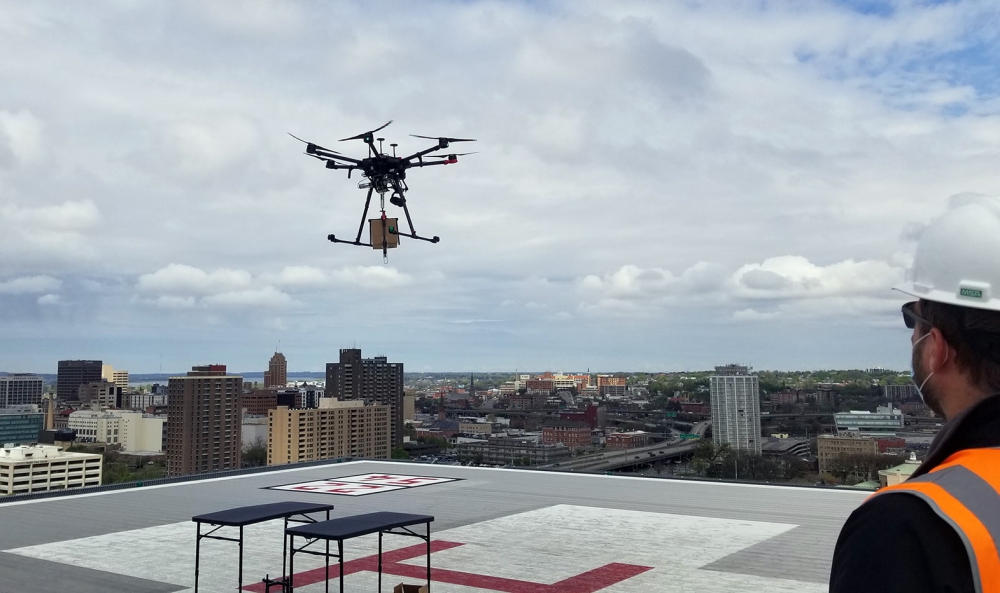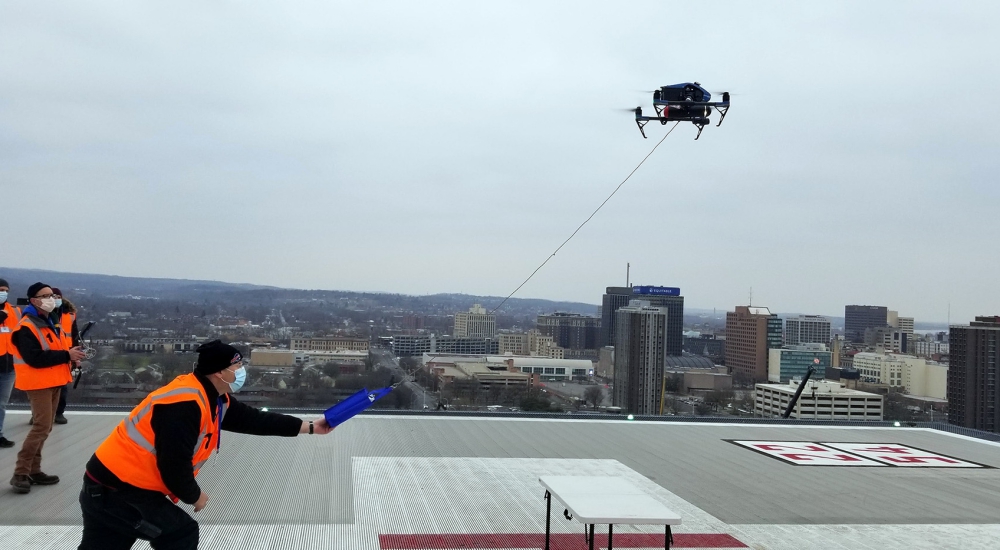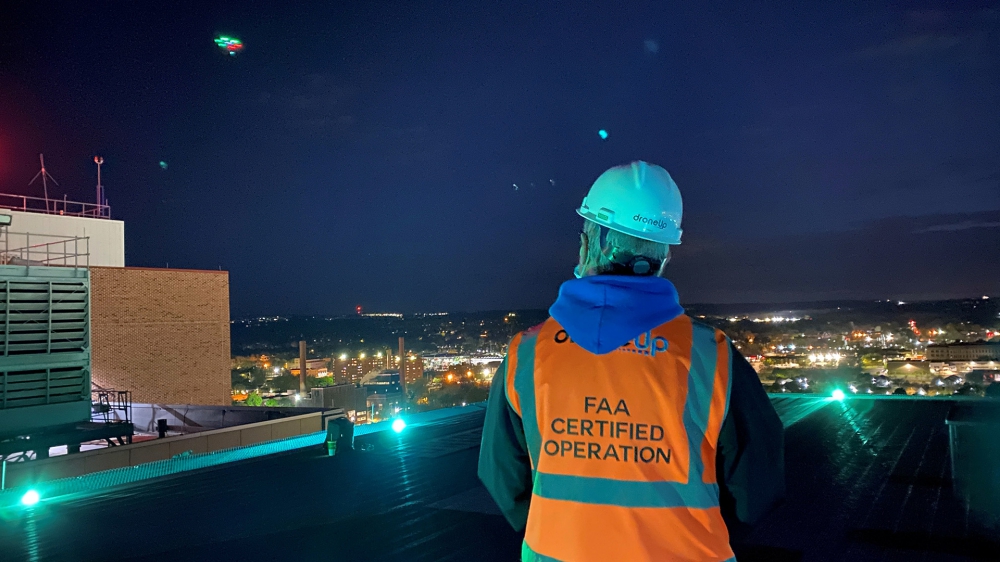recently completed a project with SUNY Upstate Medical University and DroneUp to see how many medical deliveries we could do with a drone over the city of Syracuse. All-in-all the project took about a year to get all the pieces in place to conduct these advanced operations.
There’s a lot that goes into conducting safe drone operations and our team’s years of experience helped expedite the waiver approval process with the FAA. Yes, a year’s worth of preparation to gather the necessary documentation and prove-out the safety case for these operations is a “quick” turnaround. Now that’s not a slight on the FAA, it just shows you that there’s a lot of factors to consider and plan for when conducting advanced operations like this.
These operations help us move the industry forward, showcasing to the FAA, industry, and standards organizations that commercial drone operations can be conducted safely and can provide economic benefits to the organization using them and the communities they serve.
Earlier this year, in an attempt to help in the fight against COVID-19, NUAIR, SUNY Upstate Medical University and DroneUp collaborated as part of the COVID-19 Humanitarian UAS (Unmanned Aircraft Systems) Response Partnership (CHURP). The CHURP team successfully transported unused COVID-19 test kits from one building to another on the SUNY Campus, showcasing quick, contactless deliveries using drones.
The CHURP operations were to show how we could safely transport medical supplies via drone from one hospital to another or fly test results from a lab to a hospital in an urban area. The drone was able to safely fly across a populated area and make the delivery in about two minutes, where if I was to drive that same route might take seven minutes. In a field where literally every second counts, this is a huge game-changer for the medical field.
The CHURP operations were “proof of concept” flights. We had actual unused COVID-19 test kits and delivered them from roof-top to roof-top, but it was a one-off, non-economically viable operation. We had five people taking part in those flights to make sure it was safe, and obviously paying five people to deliver one test kit is not an economically viable solution. However, these flights were instrumental in showcasing how urban drone deliveries can be conducted safely and helped prove our case for our next collaboration that we just wrapped up (only four months later).
To prove that drone deliveries can be scalable and economically viable, NUAIR, SUNY Upstate Medical University and DroneUp recently conducted additional medical deliveries in three different locations throughout Syracuse. It was another full week of deliveries from hospital to lab, hospital to surgery center, and pharmacy to a second hospital.
We conducted 52 successful deliveries throughout the week and were able to streamline the process, getting to about 5 deliveries an hour. Round trip for the longest run (hospital to lab) was one mile (1/2 a mile each way) and only took a total of seven minutes to takeoff, deliver the package and return to the hospital.
These deliveries were done with less people than we had for the CHURP deliveries. Still not in that “economically viable” window but heading in the right direction and proving that drones can conduct meaningful operations safely. These drone deliveries, coupled with our years of safe, advanced drone operations throughout New York continue to advance the UAS industry and the services NUAIR can provide to its community and clients.
All of these operations help build our safety-case and knowledgebase, allowing us to create routine, standard operating procedures that will eventually make advanced drone operations like package delivery a rinse-and-repeat process. This will allow NUAIR to help more organizations implement drones into their operations more quickly, more efficiently and increase their return on investment.
We have a great partnership with SUNY Upstate Medical University and DroneUp, and have more projects lined up for 2021. I look forward to our continued collaboration and making commercial drone deliveries both scalable and economically viable.



